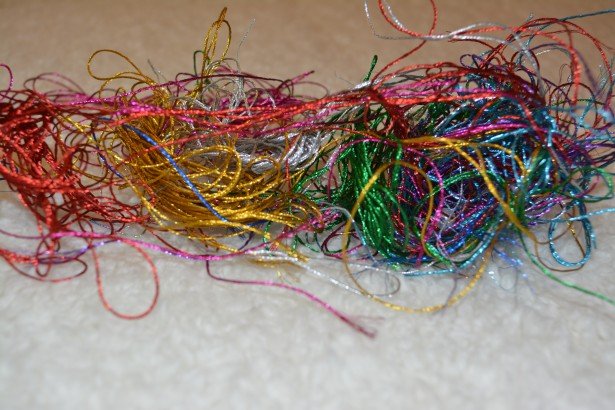
There are two types of birders that everyone hates – assholes and stringers. Which is worse, I don’t know. But everyone has dealt with their share of assholes, for assholes are a fact of life. Today, we are here to talk about stringers.
Some stringers are inexperienced observers, and some have done it for decades and have no excuse for their birdcrimes. Birders have different definitions of stringers; a stringer can be either someone who completely fabricates a bird sighting, or someone (for our purposes today, not a rank beginner) who chronically misidentifies common birds, claiming they are something rare or unusual. In my (highly esteemed) opinion, those who invent sightings of rarities out of thin air are the lowest of the birding low – they are beyond help. As for the other kind of stringer, they are not necessarily a lost cause. For some stringers, there is still good in them…it just needs to be coaxed out.
I know a lot of stringers, but as a general policy, they are not my friends. I do not wish to bird with people who I don’t trust. If I ever listed them publicly, the world of birding would be thrown into turmoil. As a Great Ornithologist, I am one of the few birders who has access to the Global Birder Ranking System’s Master Stringer List, which is updated every minute of every day. Once a birder is on this list, they tend to stay on it forever…for even in death, the Global Birder Ranking System does not forgive one’s misdeeds. However, some people who have made it on the list have managed to bird their way out of it, out of the cold darkness of lies and isolation and into the warm and loving light of acceptance, trust and honesty. What these ex-stringers have in common is that they can never recover alone…it takes a village to raise someone from a stringer into a birder.
Is this what goes on in the mind of a stringer? Though no one knows for sure, it seems likely. Image by Fluxglac.
Some birders are in the dubious situation of having some kind of relationship with a stringer. The stringer can be an acquaintance, a good friend, even a lover. The birder in this relationship always resents the stringer, but since they actually care for the stringer, they are often unwilling to just cut them off due to their stringing tendencies (though it has been done). The birder wants to help…but how? How do you help someone who is addicted to convincing themselves that they are seeing rare birds all the time?
Interventions are a nasty business, they can go wrong very easily. The stakes could not be higher. The Global Birder Ranking System actually has some confidential material on this (well, all of their material is confidential), which I have access to. With all due respect to GBRS…this belongs to the people! So at great risk to myself I now present to you the Global Birder Ranking System’s Certified and Approved Stringer Intervention Talking Points.
If one encountered this bird at a migrant trap in, say, Arizona, most birders would only call it a “Western” Flycatcher if it did not sing a signature song. The stringer would likely identify it as either a Pacific-slope or Cordilleran, depending on whatever they are hoping to see more…one must always anticipate how a stringer will operate. Fortunately, they are quite predictable. This is a Pacific-slope Flycatcher, in case you are wondering.
Know Their Ways. Stringers, in the end, all use the same ploys to trick others and themselves into thinking they saw the bird they want to see. It is surprisingly predictable. Learn to recognize these warning signs prior to the intervention so you may be fully prepared to catch them in the act. They will tell you they left their camera at home, they photographed the wrong bird, they were looking at a different bird than everyone else there, the bird just flew away, the bird just dove, the bird they want to see was seen by someone else there so they must have heard or seen the correct bird, and so on and so forth.
The Harsh Truth. Some stringers can take it, and even appreciate this in the long run. Tell them about their reputation…many people care about that, and birders are no different. Many (not all) stringers are actually blissfully unaware of their low status and poor birding skills, and not only would they like to improve their standing, they would like to be identifying birds properly. If they have been only playing ignorant the whole time, they will be humiliated that the rest of the birding community knows The Truth. Though stringers lack common sense, everyone knows that being skilled and having respect is more fun than deluding yourself and sending people on goose chases. Of course, birders are notoriously prone to becoming extremely butthurt/overly defensive, so confront with care.
This is a Glaucous-winged X Herring Gull hybrid. If you did not know that at first glance (or second, or third, etc.) that is totally OK. Birders know their limits, but stringers rarely do.
It Is OK To Misidentify Birds…but err on the side of caution. This must be stressed to the guilty party. [Even I, the Great Ornithologist that I am, have misidentified birds. It happens, it really does – TGOFJ.] What good birders do more often is not identify a bird at all, if they are not sure. The point is that it is ok to be wrong…but not all the time! And simply not knowing is better than being wrong…if there was no mystery in birding, would we still be doing it?
Evidence. When you catch a stringer in the act, first try to figure out what they are hearing/looking act that makes them think a bird is a certain species. After you have collected their mistakes, dissect them. After the dissection is complete, you then unleash a tidal wave of evidence that proves their strung rarity has been misidentified. Talk about field marks, previous records, status and distribution. Leave no stone unturned, and they will be powerless to stand their uneven ground with your knowledge and wisdom.
Go Birding. Bird with the stringer. Bird with them a lot. This is the best advice we can give. Bite the bullet and go birding with the stringer. Some say that there is no right or wrong way to bird…but that is wrong. This is when you can catch them in the act, see what they are doing wrong. Teach them how to identify birds properly. When they become unhinged over some crazy rarity they just found, you can talk them down from the very typical-looking Yellow-rumped Warbler that they are getting so worked up about. And when you are birding with a stringer, dont forget to…
If a stringer posted this photo with the caption “Brandt’s Cormorant”, it is your duty to correct them (this is a Pelagic Cormorant, of course). Do it out of spite if you must, but you can still do it with love.
…Always Shoot Them Down. If a stringer is very deep in their delusions, you have to demonstrate to them how often they are making mistakes. Do not baby them. Shoot them down in the field. Shoot them down when they show a photo of their supposed rarity, and do not let them shrug it off with the old “I photographed the wrong bird” excuse. When they share an eBird checklist, look over it for birds that don’t belong…and shoot those down. Hey, no one said interventions were easy! Eventually they will tire of being constantly doubted, and will break down under the weight of their failures. Hopefully, they will accept the truth and begin to produce real evidence for how their birds are identified.
And there you have it…if a stringer has the willpower and mental toughness to transform from their deceitful larval state into a brilliant birding butterfly, these tips can get them there. But they cannot, and will not, do it alone.


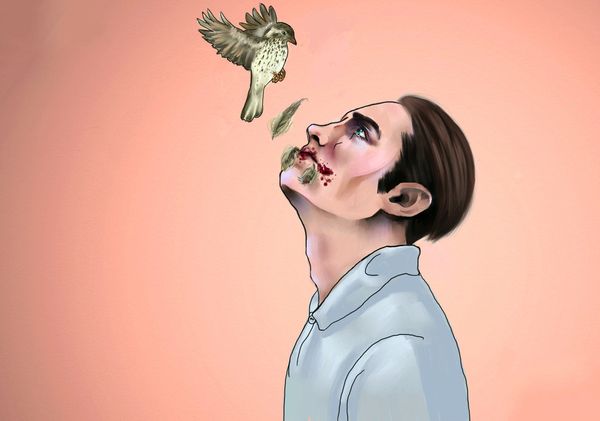
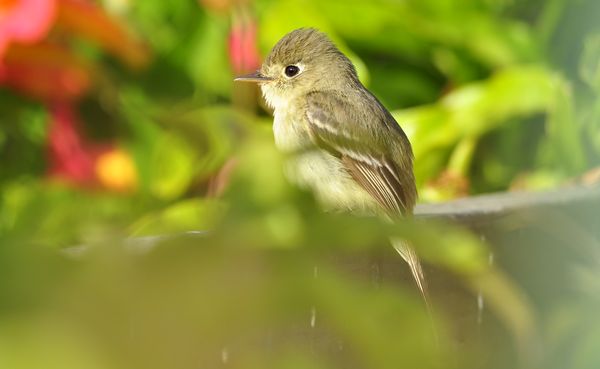
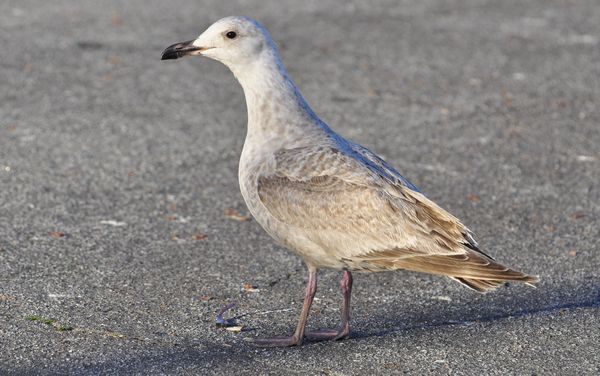
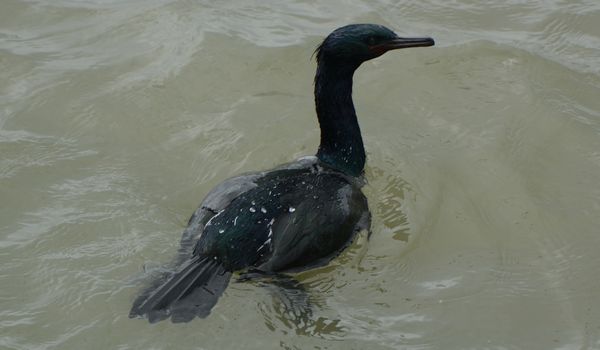











Felonious, not that I find this surprising coming from you, but dang, this is a very, very good post!
I know I’m a few days late on this, but thank you for this excellent article.
I feel that I am something of a born stringer—in other words, I think there are certain personality traits that might predispose an individual to stringer-type behavior. This doesn’t have to mean an over-investment in grandiose fantasies—rather, I believe it’s often quite innocent and more deserving to be called “naive” than malicious or willfully mischievous. This was more of an issue for me at the beginning of my time as a birder, but I can still feel the stringer in me, even if I keep him pretty well restrained nowadays. Maybe a firsthand perspective would be helpful.
There is something very compelling about the attention paid to “good” birds and their finders. While birding does represent a sort of insular niche in that great feats of birding are unlikely to impress non-birders, it does offer an unusually easy, accessible, and socially acceptable (even socially praiseworthy) way for any given person to direct a lot of attention toward themselves. “Good” birds are out there, it’s just a matter of getting off of your butt and finding them. Anyone can do it.
While I have no doubt that some stringers are simply inexperienced and/or clueless, I think it would be very wise to consider the possibility that an individual who displays stringer-type behavior is attempting to obtain attention, acceptance, and approval that they may have had difficulty finding elsewhere in life. I’d go a step further and suggest that this sort of difficulty is often found in personalities for whom the collecting/listing/independent study aspects of birding are particularly appealing. In other words, not only does birding present this opportunity, the basic act of birding seems practically designed to attract people who are starved for such opportunities.
I don’t think these people are necessarily beyond help, but unless someone sees the larger picture of what’s happening with them, there will be no help to give. A person who’s prone to “see” a rare bird where there is none may have the same fundamental problem as someone who blatantly fabricates reports. Mind those who seem to be trying too hard. They may be impervious to intellectual intervention and require special handling in a social/emotional sense.
I wish there was a way to de-emphasize “pure” rarity as a measure of the value of our observations. Birder culture thrusts a very conspicuous hierarchy upon those who are trying to determine the value of their observations. This hierarchy is the natural byproduct of the way rare birds are acknowledged. For instance, a report that is significant on a regional level, but not a state level, will receive attention on a regional level. A report that is significant on a state level, but not a national level, will receive attention on a state level, but not a national level…and so forth.
The problem is that this hierarchy is only really designed to reflect “pure” rarity. There is very little room and attention afforded to the sort of rarity and notability that can’t be expressed or understood as the occurrence of an unexpected bird (or birds). For example, this hierarchy is not suited for lifting up, say, dedicated reporting of a location that previously received little or no coverage. The greatest imaginable rarity in some counties would be a decent ebird submission! Another example might be common birds engaging in unusual or even unknown behaviors. Use your imagination. There may be some young birder out there who doing a hell of a job compiling all sorts of great data re: breeding, but no one is paying attention because they’re observing common species.
One way to address this might be to go out of our way to identify and lift up noteworthy records and events that do not conform to the standard hierarchy. It would start on the front lines of local groups, the more established members of which should pay close attention for this type of stuff. If what we might call “nontraditional notability” is identified, it should then be given special consideration—even a type of affirmative action, so to speak—at the next (regional/state) level. And so on at the national level. The ultimate goal would be that EVERY weekly round-up posted to the ABA blog would contain a sort of addendum of “stuff that isn’t necessarily a rare bird, but it’s so cool and interesting that we’re serving it up as a side dish”. Don’t relegate that stuff to brief allusions in random editorials, or let it flounder in local obscurity. Let it sit side-by-side with the glorious vagrants.
I also wish there were a way to devote more laurels to those who display competence, rather than simply find good birds. Those who correctly guess a particularly difficult ID or achieve the highest score on ear-birding quizzes shouldn’t merely see their name at the top of (yet another) list. They should be given a brief interview that’s published on the blog in which they’re asked to tell a bit about themselves, their experiences as a birder, the notable observation they’ve made, and their feelings regarding “nontraditional notability”. Give those with narcissistic tendencies a healthier and more productive (yet no less appealing!) target. Inspire them to become better birders—we all know that this is the best way to find good birds anyway. Don’t give up on these folks…neurological and mental diversity can make for outstanding birders.
There’s so much more to birding than “pure” rarity. If we go out of our way to shine a light on this fact, the popular conception of birding—as a sort of soulless trainspotting activity—will begin to reflect the wonderfully expansive and diverse thing that birding truly is.
Thanks Jochen. After laying dormant for a year, I figured the buildup of cranial writing juices might help something worth reading come about.
Lord…fascinating response. I agree with much of what you say, particularly about how certain people are predisposed to fall into these habits. Very insightful commentary, thanks for sharing.
When it comes to a wider appreciation of “nontraditional notability”, that would require a sea change in the hierarchy of what most birders care about, and I don’t think that is going to happen quickly. No offense, but I would have no interest in reading an interview of someone who got a bird quiz right, and I don’t think I’m in the minority there…and then whoever put the quiz out would have to interview and publish something on dozens of people for every quiz, which is not realistic. Reports of unusual and interesting behavior, in my opinion, belong on listservs, and I think birders receive those types of posts well…stringers (as you know) don’t seem to be very interested in this arena however.
Hehe, yeah, I definitely veered sharply into pie-in-the-sky territory there. As I’m apt to do. Indeed, a magazine full of interviews from people who’ve scored well on tests would be dreadful. Ah well…the best I can do is turn the tap on and hope something relevant comes out. Got about a 50% success rate on that. Seriously though, great article, it’s the type of thing that should be passed around.
Felonious Jive:
Do you consider the folks who are ostensibly list-building by eBirding a species which was observed a couple of days prior and which included supporting data, media, etc. (continuing bird) as a form of Stringing, or is that a separate offense? And what about eBirders that exploit filters–that is, It’s not flagged, so I can claim it without being questioned.
Stringing and off branches have seemingly become an epidemic. eBirders of this ilk are playing the system.
“Know Their Ways. Stringers, in the end, all use the same ploys to trick others and themselves into thinking they saw the bird they want to see. It is surprisingly predictable.”
That assumes they aren’t cleverer than us. Could be way more of them than we’ll ever know.